
My favorite television station is MLB. It is on almost continuously when I am at home. I enjoy the commentary of all the “main-players”, Greg, Brian, Matt, Tom, Kenny, Harrold, Dan, Al, Joel, Billy, Sean, and of course Heidi and other outstanding female analysts (Where have Mitch and Alana been?). And Bob Costas is certainly appreciated, leading the discourse in “Round-Table” discussions and private interviews.
It is always interesting to me when the topic of any discussion borders on “unbecoming behavior” that is either justified by the staff’s ex-ball-players and vilified by non-ball-players, or categorically criticized in specific situations by x-ball-players and unquestionably condemned on principle by the “non-jocks.” There is no discussion that comes under higher scrutiny and vigorous discussion than that area of Baseball mystique known as the “bean-ball” – the deliberate intent of a pitcher to administer to a batter the bludgeoning effect of his best “fast-ball” to any part of the batter’s body, without any conscious concern for the well-being of that person’s body nor the possible affect the damage could have on the career of the afflicted player.
The “jocks” on the Staff almost always contend that “It’s” just part of the Game, but, under any particular circumstance, will amend their bias with a softened response, for fear they will be thought of as ultra-insensitive to the public outcry that most certainly would not agree with them.
The analysts like Greg, and Brian, Jon, and Matt who empathize with the most typically “cautionary” fans (especially kids) find that any degree of flagrant “un-sportsman-ship” as totally disrespectful, not only to the the Sport of Baseball itself and Its common (but sometimes unwitting)representative(s), but to “man-kind” in general.
The “new-wave” Sports Connoiseur of this modern era is becoming more appreciative of the active role that Major-League Baseball has taken to assure that both the fans and players are not denied their inalienable right of unopposed security at ball-games whenever and wherever it is conceivably possible. When fights break out (often because of pitcher/batter altercations)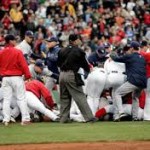 , M.L.B. administrators are quick to penalize the most blatant of personnel aggressiveness. Those culprits displaying the most offensive of battery attacks are severely reprimanded. “Sucker-punches” and other blatantly violent actions are particularly frowned upon.
, M.L.B. administrators are quick to penalize the most blatant of personnel aggressiveness. Those culprits displaying the most offensive of battery attacks are severely reprimanded. “Sucker-punches” and other blatantly violent actions are particularly frowned upon.
But, even this “un-sports-man-like” behavior still persists because the reactions don’t usually have a direct impact on the outcome of the game. So, the Game goes on, and no solution seems to be fast-coming to stop the “bean-ball.” The cavalier attitude that many players and x-players seem to posture is hard to fathom by other more-sympathetic ex-players, and “analysts” who would never knowingly place themselves in a position of being hit (anywhere on their bodies) by a hard, 5-ounce, round projectile traveling at a speed between 90 to 100 MPH.
It’s not easy for “sane” people to understand some aspects of the “hard-nosed” baseball mentality. Are those individuals who think the “bean-ball” should remain as part of the game simply CRAZY, or just plain STUPID? Has it become so ingrained in their collective psyche, that the prospect of being bludgeoned by that blunt instrument so beloved by countless participators of the art of surviving close encounters, that the joy of overcoming the pain and tissue-damage is worth it?
Walk into any baseball locker-room as the players are dressing into their uniforms and accessory equipment and you’ll see bumps and bruises, fresh or festering, that are reminiscent of bad-hop grounders or incidental mishaps from grazed pitches innocently gone awry. The most striking, of course, are those deeply darkened bruises that sink into the lower reaches of bodily tissue that stem from being hit deliberately by a 95 mile an hour fastball.
The bodily flesh of “Big-Papi” and Andrew McCutchen would certainly bear witness to such atrocities. Bones have been broken or chipped, concussions have occurred, rib-cartilage has been separated, Star athletes have been disabled, and still M.L.B. has not found a platform from which to mount an aggressive curtailing of such fierce and unrelenting indignities to the Sport of Baseball.
Greg, Brian, Matt, Jon, and “others” are constantly implying that the Game has changed and is continually changing for the better. And it appears that their patience and passive resistance to ossified “baseball mentality” will ultimately prevail as the “old-school- dinsaurs” are replaced by the clarity of enlightened and hospitable thinkers.
The “Bean-ball” has always been part of the Game; but there is no legitimate reason for it to remain. No one really wants it. The problem is that no one can figure out a reasonable and responsible way to get rid of it. The well-respected and recent Hall-of-Fame inductee, Tony LaRussa recently inflamed the issue by justifying the actions of the Arizona Diamond-Backs’ deliberate attack on Andrew McCutchen because of what accidentally happened to the Diamond-backs Paul Goldsmidth.
His main point was that it made no difference as to pure intent, but that both players were side-lined indefinitely. Most people are incensed by what might be construed as to his callous indifference to the “Rightness and the Wrongness” in the individual cases. Not even Tony’s litigious expertise will vindicate his argument to public opinion.
But his main point must be considered deeply. Any pitcher, who insists on coming in tight to a batter, may simply accidentally hit a batter (like Goldsmidth). Even the Diamond-back pitchers do this. It is impossible to regulate. So a real practical solution seems impossible! Right?
Nothing is impossible in Baseball. And the MLB Commissioner’s Office has the ultimate power to implement rule changes that can improve the quality of play, and every aspect of the Game. It has utilized this power many times already. The ONLY-ONLY-ONLY way to stop this prevalent and “most-egregious” and disrespectful act of “Baseball-Vengeance” is to allocate to a batter, who is struck with direct force by one of a pitcher’s fastest thrown balls (not change-ups, curve balls, Knukle balls), 2 bases and not just 1 base.
The reason that this will stop the “bean-ball,” and even the accidental mishap, is because it will put the actual game in jeopardy, and not merely the bats-man. The pitcher without pin-point control is going to think twice about coming inside.
The team who still harbors a sense of retribution is going to have to wait until his team is either winning or losing by 10 runs in late innings in order to feed its archaic sense of satisfactory retribution. If a batter is wearing “batting armor” on his elbow or arm, and it is obvious that he incurred no bodily injury, or if the ball simply grazed any other part of the body, then the umpire would award the batter one base only. It is a simple accommodation to a batter and a team.
There is no legitimate reason for not enacting this kind of rule. Also, recently our celebrated analysts have been discussing ways that stimulate the hitters in Major-League Baseball to enhance there batting prowess. This rule would certainly afford batters a little more confidence, and at least marginally improve their productivity.
Run production should increase: with bases loaded, a solidly hit batman would drive in two runs. Even with no one on base, a hit bat-man is placed in scoring position. Is any defensive team willing to risk such a scenario. Even the Diamond-backs would find themselves contemplating the consequence. Hopefully their Organization will not pursue a way to circumvent the intent of the “Law.”
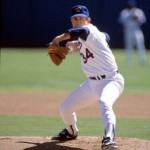
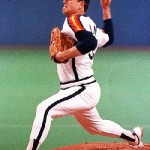
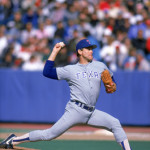


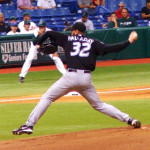
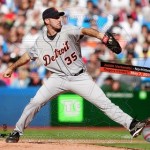
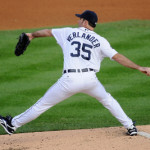

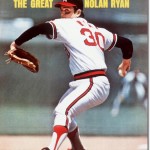




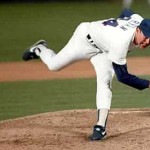
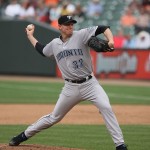
 Verlander’s delivery is identical.
Verlander’s delivery is identical.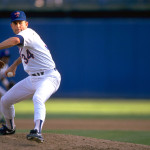




 , M.L.B. administrators are quick to penalize the most blatant of personnel aggressiveness. Those culprits displaying the most offensive of battery attacks are severely reprimanded. “Sucker-punches” and other blatantly violent actions are particularly frowned upon.
, M.L.B. administrators are quick to penalize the most blatant of personnel aggressiveness. Those culprits displaying the most offensive of battery attacks are severely reprimanded. “Sucker-punches” and other blatantly violent actions are particularly frowned upon.